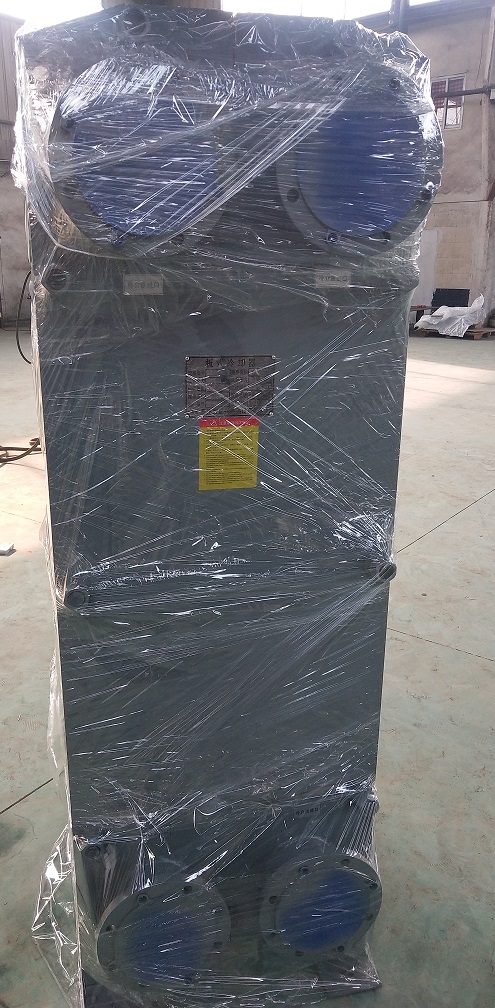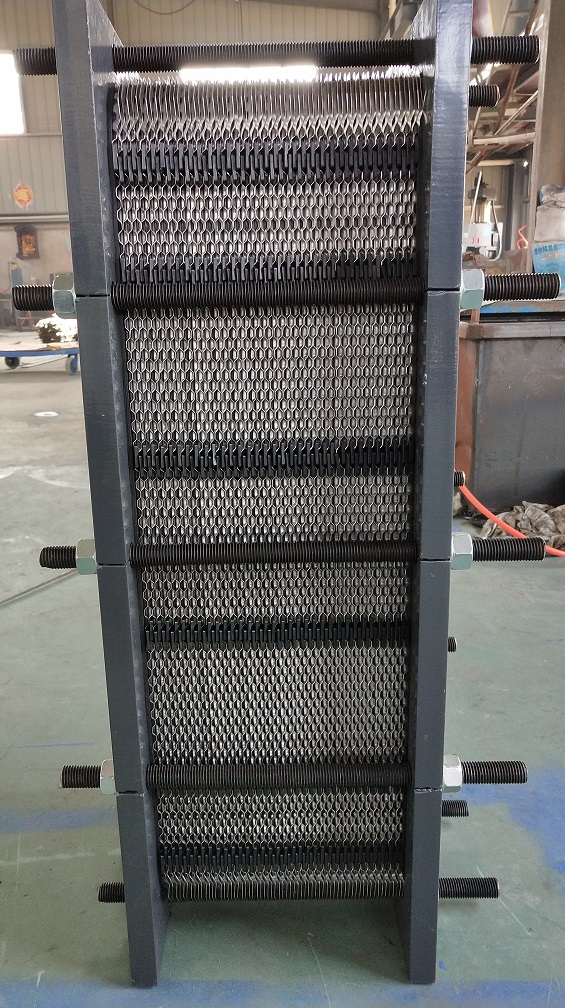Plate type Heat-Exchanger
Plate type heat-exchanger
Plate type Condenser
Plate type Heat-Exchanger,(Comparison of plate heat exchanger and shell and tube heat exchanger). a. The heat transfer coefficient is high; because different corrugated plates are inverted, they form a complex flow channel, which makes the fluid rotate three-dimensionally in the flow channel between corrugated plates, and can be at a low Reynolds number (generally Re = 50 ~ 200) Turbulence is generated, so the heat transfer coefficient is high, which is generally considered to be 3 to 5 times that of the shell and tube type. b. The logarithmic average temperature difference is large, and the end temperature difference is small. In the shell-and-tube heat exchanger, the two fluids flow in the tube-side and shell-side, respectively, and are generally cross-flow, and the logarithmic average temperature difference correction coefficient is small, while plate-type heat exchangers are mostly co-current or counter-current. The correction coefficient is usually about 0.95. In addition, the flow of cold and hot fluids in the plate heat exchanger is parallel to the heat exchange surface and there is no side flow. Therefore, the temperature difference at the end of the plate heat exchanger is small, and the heat exchange of water can be performed. Below 1 ° C, the shell and tube heat exchanger is generally 5 ° C fff.c. with a small footprint. The plate heat exchanger has a compact structure, and the heat exchange area per unit volume is 2 to 5 times that of the shell and tube type. It is also not necessary to reserve a maintenance site to extract the tube bundle like the shell and tube type. The area of the heater is about 1/5 ~ 1/8 of the shell and tube heat exchanger. d. It is easy to change the heat exchange area or process combination; as long as a few plates are added or removed, the purpose of increasing or reducing the heat exchange area is achieved; changing the plate arrangement or replacing a few plates to achieve the required process combination To adapt to the new heat exchange conditions, the heat transfer area of the shell and tube heat exchanger is almost impossible to increase.


